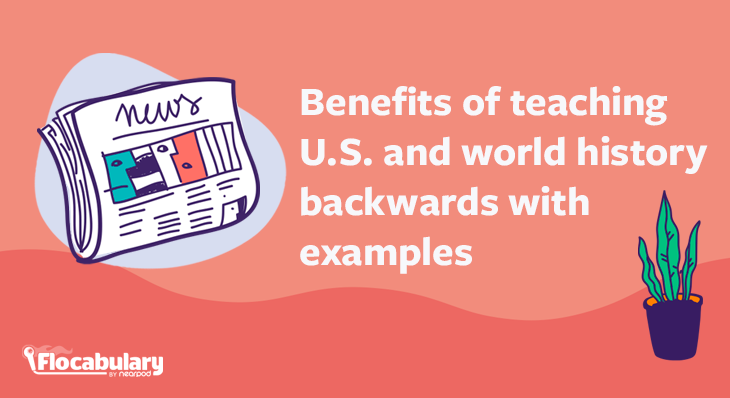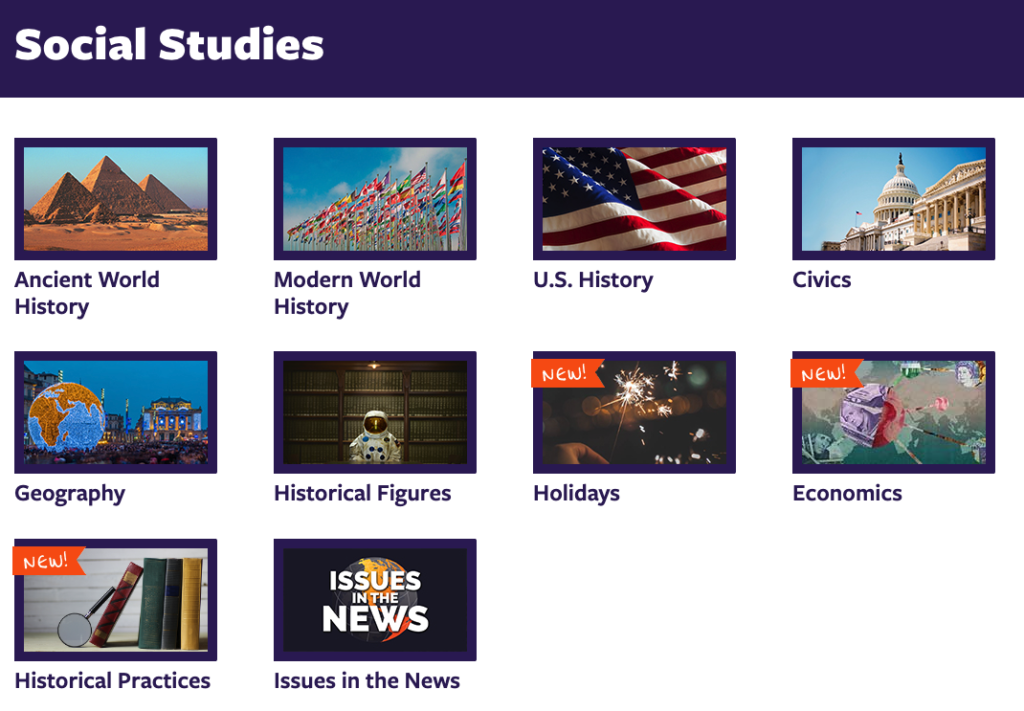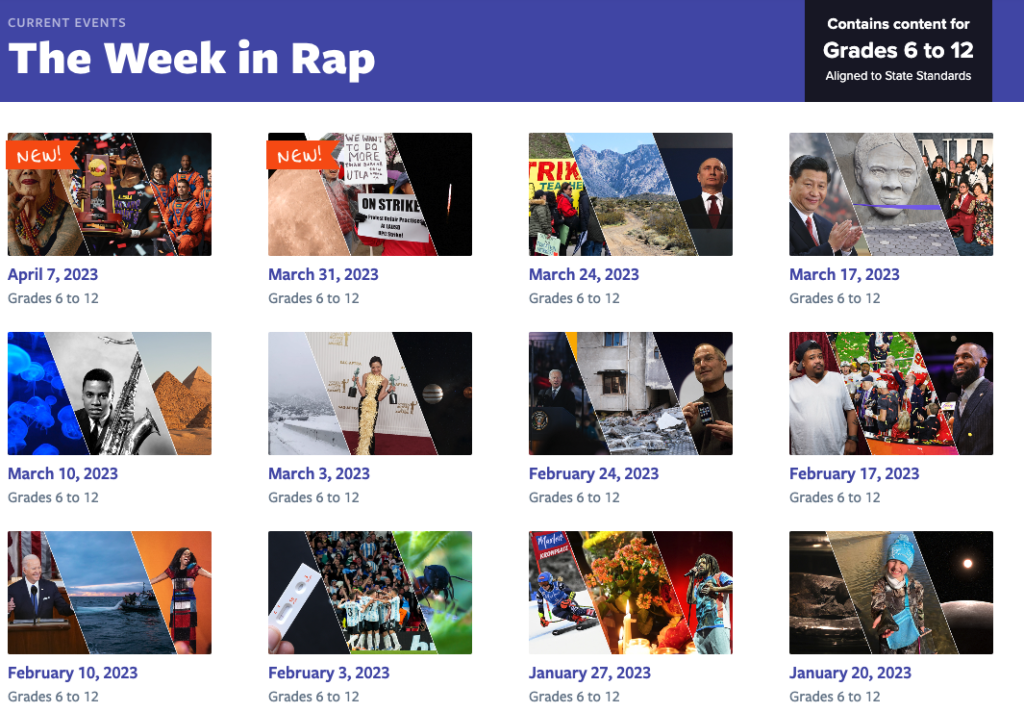
Benefits of teaching U.S. and world history backwards with examples
What does it mean to teach history backwards?
Educators teaching history backwards, in the context of history education, means starting instruction with recent historical events and working their way chronologically backward. This approach is controversial because it deviates from the traditional linear progression of history, which some argue is necessary for a comprehensive understanding of past events. The pros of teaching history backward by include increased student engagement and relevance, as lessons can be tailored to students’ current interests and concerns. However, it may lead to potential gaps in foundational knowledge and a perceived disconnect from the established historical narrative. Striking a balance between these considerations is essential for effective history education.
New to Flocabulary? Sign up for an account to access the video lessons and resources mentioned in this article.
What are the cons of teaching history backwards?
On the other hand, some educators believe that this approach should not be used to teach our students. Some of these cons include:
- Events in history move from past to present and should be taught in that order. For example, reconstruction did not happen before the Civil War; it happened after. Having students learn out of order can confuse them. In an effort to get them interested in the causality of historical events, they will become confused and frustrated.
- Teaching history in order to provide useful background information and context. It’s necessary to know about ancient Greece before studying ancient Rome. Without context, you can never develop a real understanding of an event or culture.
Benefits of teaching U.S. and world history backwards with examples
Let’s delve into the benefits and controversies of teaching history backward, accompanied by real-life examples to use in the classroom. Ultimately, we should teach U.S. and world history with a balance of both strategies of backward and chronological order. Use Flocabulary’s Social Studies lessons to use these teaching strategies, covering the following topics:

- Ancient World History
- Modern World History
- United States (U.S.) History
- Civics
- Geography
- Historical Figures
- Holidays
- Economics
- Historical Practices
- Issues in the News
- The Week in Rap
1. The present world is more “real” and more interesting to students
Many students who feel that ancient history has no application to their lives are nevertheless interested in the world today. A great way of starting a unit is to ask students to generate a list of their interests and concerns that relate to global issues. Touching on these topics first and then moving backwards shows students why they’re learning these concepts. Teaching why history is significant is just as vital as teaching history itself.
2. It’s key to start a lesson with something that “hook” students’ attention
If you don’t grab someone’s attention early on, it’s often hard to get it later. By beginning with an interesting hook related to current events, students are motivated to keep learning. However, this could also be argued when selecting a hook for historical topics.
An excellent resource for engaging students with current events is The Week in Rap. Every Friday, we produce a free music video covering that week’s major headlines. It can be used as a writing and discussion prompt, or as a reference point for studying history.

3. Students are more likely to ask “why” than “what happened next?”
“Why” is a very natural question. For proof, spend the afternoon with a three-year-old. And a good student, and good historian, is like a detective: constantly trying to uncover causes behind actions and events. By starting with more recent historical events and moving chronologically backward, students are prompted to critically analyze the reasons, consequences, and significance of these events. The “what happened next” question, while important, tends to follow naturally as students grasp the broader historical context.
4. Balance history education by mixing backward and chronological approaches
Balancing teaching history backwards and chronologically is vital for history educators. While the chronological approach provides a foundational understanding of the historical timeline, the backward approach encourages critical thinking and a deeper exploration of why events occurred. This balance offers students contextual comprehension, allowing them to appreciate both the sequence of events and the causal relationships that shaped history. A balanced strategy ensures that students develop a comprehensive historical perspective, combining the “what happened next” with the “why” to equip them with essential analytical and critical thinking skills.
Start using these teaching tips in the history classroom
Embracing the approach of teaching world history backwards offers an enriching way to study history that transcends the boundaries of a conventional history class. By using the present as our starting point and working backward, students can connect the dots between the past and the present. Whether you’re teaching about world wars, American history, ancient history, or historical figures, creating a balance between backward and chronological approaches empowers students to comprehend the intricate tapestry of the past while fostering a deeper appreciation for the history that has shaped our world.
New to Flocabulary? Sign up for an account to access the video lessons and resources mentioned in this article.
This Post Has One Comment
Comments are closed.

I appreciate this provocative approach to teaching. Take racism for example, to consider an important contemporary issue well addressed with both contemporary urgency and historical background. I can imagine studying racism today and moving back through our national history and world civilization would help connect the dots much more readily than starting with the pyramids and hoping to get through to the present day by the end of June. Bravo Flo!